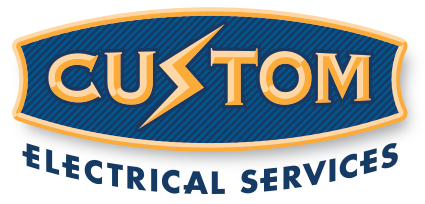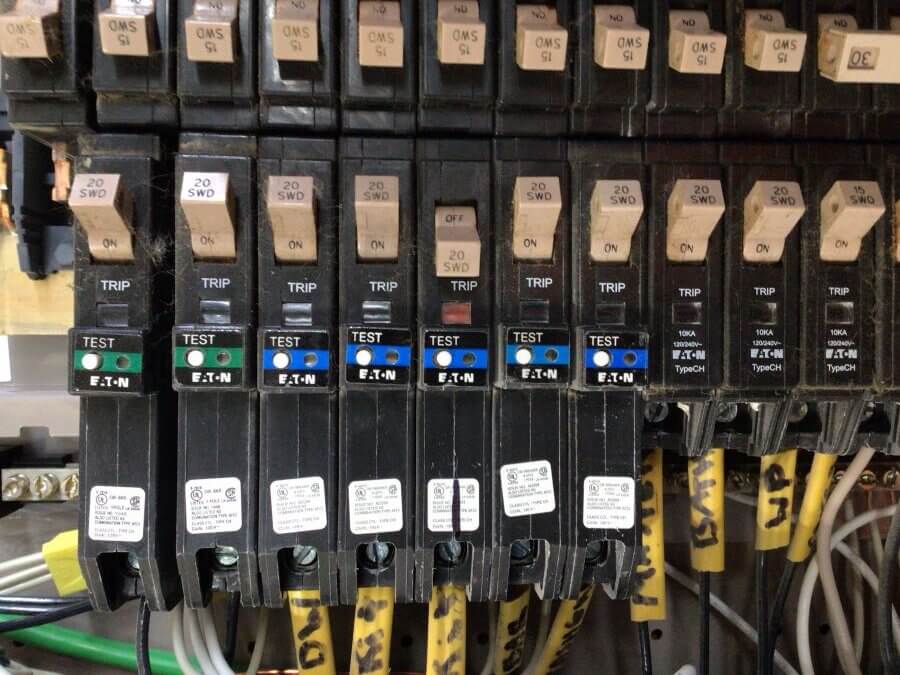Check for Overheating Appliances
Appliances with a high power demand can overheat, causing strain on your electrical panel and eventually tripping the circuit breaker. The following home equipment is the most likely to overheat:
- Dishwashers
- Ovens
- Refrigerators
- Air conditioners
- Microwaves
Often, the culprit is a newer appliance recently added to an older electrical panel. When analyzing if an overheating equipment is responsible for your tripped breaker, consider the following questions:
Are you loading the appliance correctly?
Failing to load a dishwasher or dryer correctly may cause excess pressure on one specific area, causing overheating.
Does the appliance feel hot to the touch when in use?
If the side of your refrigerator or air conditioner feels hot, it’s a sign the equipment is under strain and overheating.
Does the appliance have a blocked vent?
A blocked vent in a clothes dryer may prevent the release of heat buildup, causing internal heat levels to rise beyond their capacity and tripping the circuit breaker.
Watch for Overloaded Circuits
Overloaded circuits are another of the most common causes of a tripped breaker. This occurs when too much power goes through one area of the electrical circuit. For example, using a toaster, hairdryer, and coffee maker with an extension cord. The extension cord alone won’t cause the tripped breaker, but using one may place too high a load on one area of a circuit by plugging in multiple devices or appliances.
Watch for the following signs of an overloaded circuit:
- Lights frequently dim when using high-power appliances
- Warm outlets and switches
- Buzzling outlets and switches
- Sluggish performance from appliances and power-connected devices
How to Address an Overloaded Circuit
Avoid Overusing Extension Cords
Extension cords are generally designed as a temporary measure to allow you to plug in an appliance for a specific period of time. Avoid over-using extension cords, particularly with high power demand appliances such refrigerators or clothes dryers.
Plug Kitchen Appliances into Different Outlets
Spread kitchen appliances such as toasters and microwaves around the kitchen and plug them into separate outlets to avoid overloading one circuit when cooking family meals.
Unplug Items When Not in Use
Many larger appliances can be unplugged when not in use to avoid potential overloads. For example, you can unplug your microwave and toaster oven or turn off your furnace during the summer to avoid a potential overload.
Identify Short Circuits
Electricity will flow in the direction of least resistance and take the shortest path. The longest distance requires the power to flow through a ground wire on the specifically designed circuit. When there’s a shorter route available, the electrical flow will travel in that direction. This is called a short circuit and is one of the primary causes behind a tripped circuit breaker.
Short circuits are generally caused by:
- Loose connections in the electrical box
- Water coming into contact with electrical wiring
- Damaged outlets, switches, or wiring
- Electrical surges
- Faults in a new appliance
How Do I Know If I Have a Short Circuit?
If a short circuit is the cause behind your frequently tripping breaker, there will be many signs, including:
- Sparks, Buzzing, and Popping Sounds
There are audible and visual signs of a short circuit. When you notice an outlet sparking, buzzing, or a popping sound when you plug an appliance in, you should immediately call an emergency electrician to prevent electrical damage.
- Charred Wiring and Outlet Plates
If the short circuit has been ongoing, you may notice signs of past damage to your electrical structure, including charred wiring and burnt outlet plates.
- Burning Smell
During an ongoing short circuit event, you may notice a distinct burning smell in the area of your appliance. Turn off the power immediately and call an electrician to review the equipment and your breaker.
Frequently Asked Questions About Tripped Circuit Breakers

Why Does the Breaker Trip If I Have Nothing Plugged In?
If there’s no equipment plugged into the circuit and the breaker is still tripping, you likely have damaged wiring leading to the breaker, degraded insulation, or a ground fault. When your breaker continually trips without any electrical load, book an inspection with an electrician to get to the root cause.
How Can I Tell If a Breaker Has Been Tripped?
There may not be one specific sign of a tripped breaker. You may find an outlet stops working or a rarely used appliance loses power. Go to the electrical panel and open the door. When one switch faces a different direction than the rest, you may have a tripped breaker.
Will Upgrading My Electrical Panel Stop The Breaker Tripping?
In older homes with frequently tripping breakers, the problem is usually related to an older panel with insufficient amperage to match the demand. However, upgrading your electrical panel should only be decided on after consultation with an electrician. They may find a fault within your wiring or an appliance issue they can fix without replacing the entire panel.
Call Custom Electrical For Tripped Breaker Repair Throughout Iowa
Serving Central and Eastern Iowa homeowners, our electricians at Custom Electrical Services have several decades of experience diagnosing and fixing tripped breakers in homes throughout the state. Our 5-star electrical service rating is due to our focus on communication and our speed of response to potential electrical safety hazards.
Don’t attempt to fix a continually tripping breaker without an electrical license! If you are considering upgrading your electrical panel to resolve breaker performance issues, book a home visit via our online form with our 24/7 electricians or call 515-669-3418 for urgent electrical services in response to tripped breakers and electrical safety concerns.



